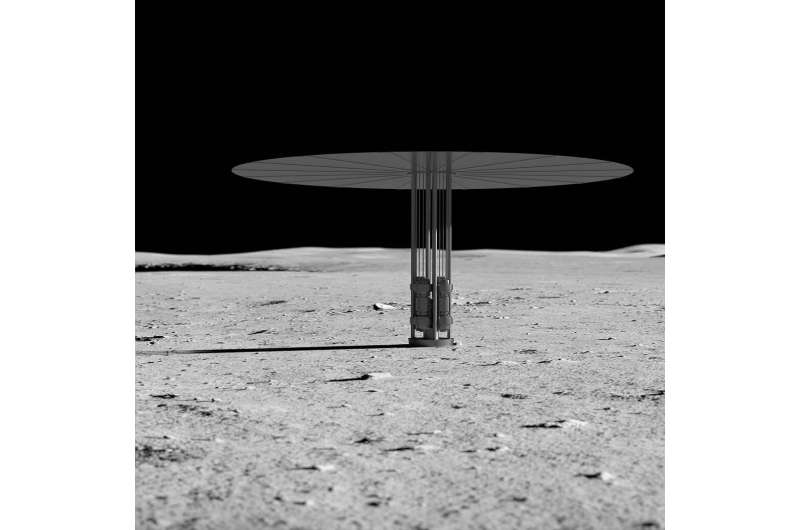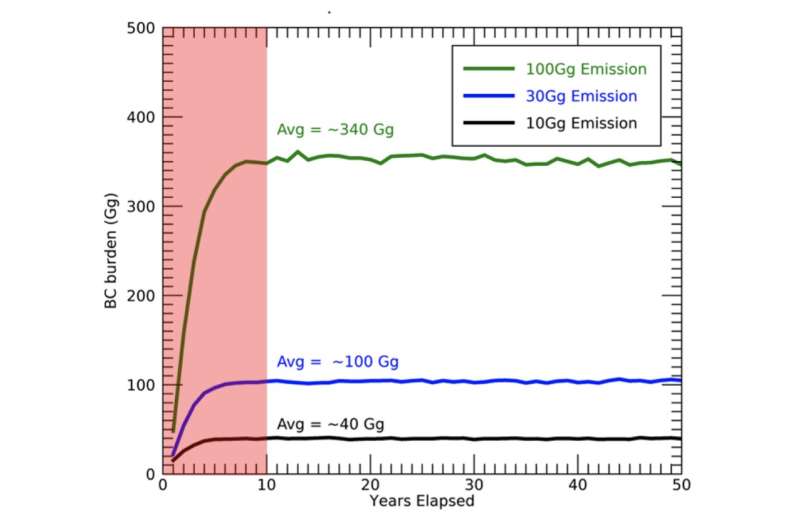
Copernical Team
NASA announces Artemis concept awards for nuclear power on moon

NASA and the U.S. Department of Energy (DOE) are working together to advance space nuclear technologies. The agencies have selected three design concept proposals for a fission surface power system design that could be ready to launch by the end of the decade for a demonstration on the moon. This technology would benefit future exploration under the Artemis umbrella.
The contracts, to be awarded through the DOE's Idaho National Laboratory, are each valued at approximately $5 million. The contracts fund the development of initial design concepts for a 40-kilowatt class fissionpower system planned to last at least 10 years in the lunar environment.
Relatively small and lightweight compared to other power systems, fission systems are reliable and could enable continuous power regardless of location, available sunlight, and other natural environmental conditions.
Projected increase in space travel may damage ozone layer

Getting all the possible science in - Sols 3507-3511
 This weekend plan is a four sol plan to allow a no planning day on Monday, for the commemoration of "Juneteenth," and we crammed a lot in. This workspace is relatively similar in appearance to the last workspace (which is not that far away) but still had more potential targets than we could ever hope to capture, even in a big four sol plan.
There is a finite amount of time that we can fill
This weekend plan is a four sol plan to allow a no planning day on Monday, for the commemoration of "Juneteenth," and we crammed a lot in. This workspace is relatively similar in appearance to the last workspace (which is not that far away) but still had more potential targets than we could ever hope to capture, even in a big four sol plan.
There is a finite amount of time that we can fill Students take their imagination to the lunar surface in the latest Moon Camp Challenge
 From a base built by rovers and astronauts using in-situ resources at the lunar south pole to a north pole facility with surface and subsurface living/working areas, the 2021-2022 Moon Camp Challenge's winning projects once again highlighted students' ability to envision the future of space exploration.
This fourth edition of the Moon Camp Challenge involved a record participation of 5,649
From a base built by rovers and astronauts using in-situ resources at the lunar south pole to a north pole facility with surface and subsurface living/working areas, the 2021-2022 Moon Camp Challenge's winning projects once again highlighted students' ability to envision the future of space exploration.
This fourth edition of the Moon Camp Challenge involved a record participation of 5,649 A blueprint for life forms on Mars
 The extremely salty, very cold, and almost oxygen-free environment under the permafrost of Lost Hammer Spring in Canada's High Arctic is the one that most closely resembles certain areas on Mars. So, if you want to learn more about the kinds of life forms that could once have existed - or may still exist - on Mars, this is a good place to look.
After much searching under extremely difficul
The extremely salty, very cold, and almost oxygen-free environment under the permafrost of Lost Hammer Spring in Canada's High Arctic is the one that most closely resembles certain areas on Mars. So, if you want to learn more about the kinds of life forms that could once have existed - or may still exist - on Mars, this is a good place to look.
After much searching under extremely difficul Go ahead for second round of micro-launcher payload competition
 On 20 June 2022, the German Space Agency (DLR) launched the second round of its competition for zero-cost flights of small satellites on microlaunchers developed and constructed in Germany. This marks the start of the implementation phase for a total of three additional flights being offered by the space companies Isar Aerospace Technologies GmbH and Rocket Factory Augsburg AG in 2023 and 2024.
On 20 June 2022, the German Space Agency (DLR) launched the second round of its competition for zero-cost flights of small satellites on microlaunchers developed and constructed in Germany. This marks the start of the implementation phase for a total of three additional flights being offered by the space companies Isar Aerospace Technologies GmbH and Rocket Factory Augsburg AG in 2023 and 2024. China develops new coating for spacecraft thermal control
 Chinese scientists have developed a metallic-based thermal-control coating for the Shenzhou-14 crewed spaceship that will protect the taikonauts from extreme heat and cold during their six-month stay in orbit.
The new coating works in two ways: providing low solar absorption to help reduce the sun's effect on the spacecraft's interior temperature; and providing low infrared emittance to bl
Chinese scientists have developed a metallic-based thermal-control coating for the Shenzhou-14 crewed spaceship that will protect the taikonauts from extreme heat and cold during their six-month stay in orbit.
The new coating works in two ways: providing low solar absorption to help reduce the sun's effect on the spacecraft's interior temperature; and providing low infrared emittance to bl Chinese official says its Mars sample mission will beat NASA back to Earth
 A senior Chinese space official said on Monday the country is on track to bring back rocks from the surface of Mars two years ahead of the planned joint effort by NASA and the European Space Agency to do the same thing.
Sun Zezhou, the chief designer of China's first Mars mission, Tianwen 1, said in a talk celebrating the 120th anniversary of Nanjing University, that China is ready to send
A senior Chinese space official said on Monday the country is on track to bring back rocks from the surface of Mars two years ahead of the planned joint effort by NASA and the European Space Agency to do the same thing.
Sun Zezhou, the chief designer of China's first Mars mission, Tianwen 1, said in a talk celebrating the 120th anniversary of Nanjing University, that China is ready to send InSight gets a few extra weeks of Mars science
 As the power available to NASA's InSight Mars lander diminishes by the day, the spacecraft's team has revised the mission's timeline in order to maximize the science they can conduct. The lander was projected to automatically shut down the seismometer - InSight's last operational science instrument - by the end of June in order to conserve energy, surviving on what power its dust-laden solar pan
As the power available to NASA's InSight Mars lander diminishes by the day, the spacecraft's team has revised the mission's timeline in order to maximize the science they can conduct. The lander was projected to automatically shut down the seismometer - InSight's last operational science instrument - by the end of June in order to conserve energy, surviving on what power its dust-laden solar pan Tyvak International completes Critical Design Review of Deep Space Bound Milani nanosat
 Terran Orbital Corporation (NYSE: LLAP), a global leader in satellite solutions, primarily serving the aerospace and defense industries, has announced its wholly-owned subsidiary, Tyvak International SRL, has together with its partners, achieved full Critical Design Review of the Milani spacecraft.
A critical component of the Hera planetary defense mission,
Terran Orbital Corporation (NYSE: LLAP), a global leader in satellite solutions, primarily serving the aerospace and defense industries, has announced its wholly-owned subsidiary, Tyvak International SRL, has together with its partners, achieved full Critical Design Review of the Milani spacecraft.
A critical component of the Hera planetary defense mission, 